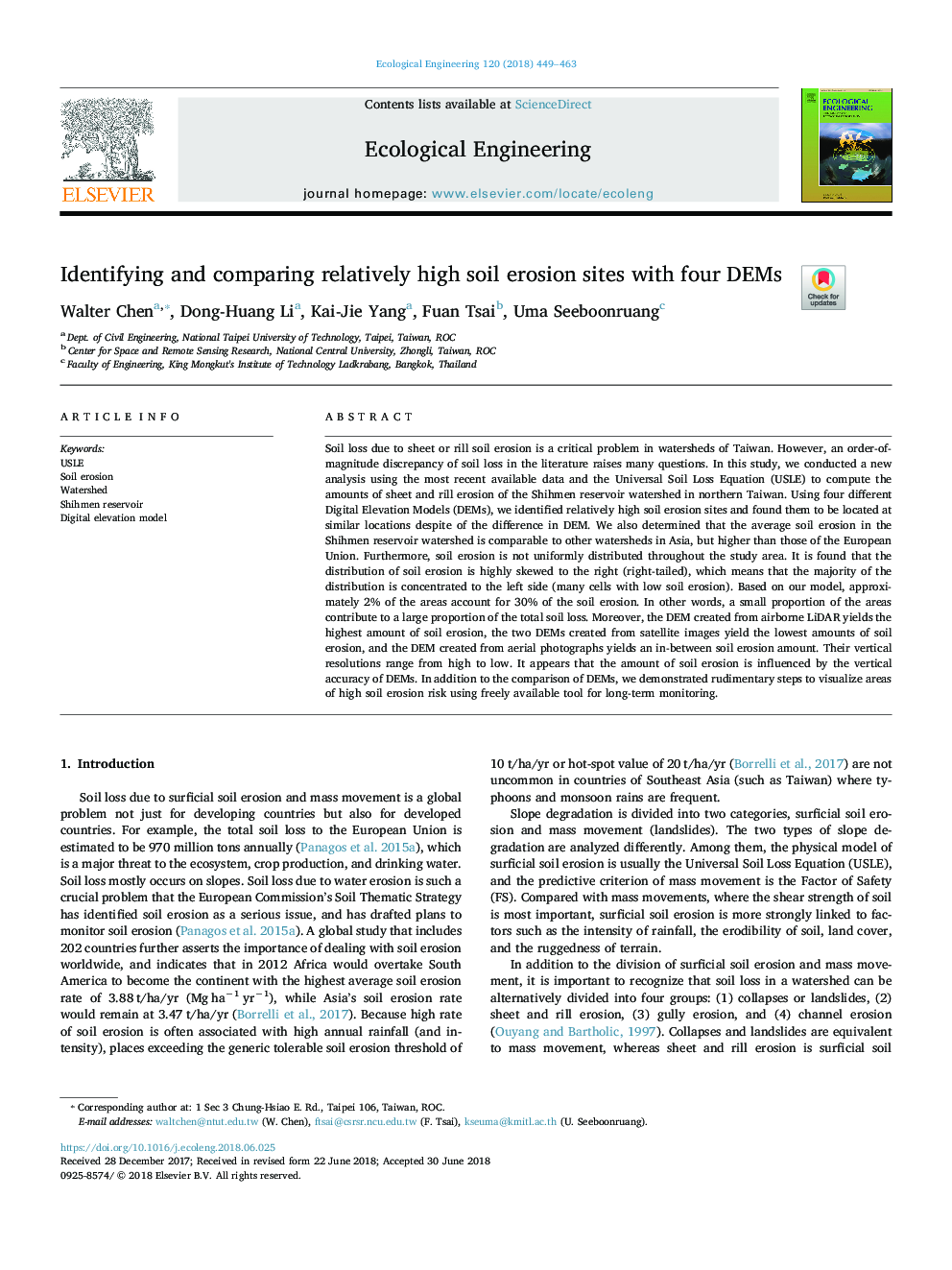| Article ID | Journal | Published Year | Pages | File Type |
|---|---|---|---|---|
| 8847843 | Ecological Engineering | 2018 | 15 Pages |
Abstract
Soil loss due to sheet or rill soil erosion is a critical problem in watersheds of Taiwan. However, an order-of-magnitude discrepancy of soil loss in the literature raises many questions. In this study, we conducted a new analysis using the most recent available data and the Universal Soil Loss Equation (USLE) to compute the amounts of sheet and rill erosion of the Shihmen reservoir watershed in northern Taiwan. Using four different Digital Elevation Models (DEMs), we identified relatively high soil erosion sites and found them to be located at similar locations despite of the difference in DEM. We also determined that the average soil erosion in the Shihmen reservoir watershed is comparable to other watersheds in Asia, but higher than those of the European Union. Furthermore, soil erosion is not uniformly distributed throughout the study area. It is found that the distribution of soil erosion is highly skewed to the right (right-tailed), which means that the majority of the distribution is concentrated to the left side (many cells with low soil erosion). Based on our model, approximately 2% of the areas account for 30% of the soil erosion. In other words, a small proportion of the areas contribute to a large proportion of the total soil loss. Moreover, the DEM created from airborne LiDAR yields the highest amount of soil erosion, the two DEMs created from satellite images yield the lowest amounts of soil erosion, and the DEM created from aerial photographs yields an in-between soil erosion amount. Their vertical resolutions range from high to low. It appears that the amount of soil erosion is influenced by the vertical accuracy of DEMs. In addition to the comparison of DEMs, we demonstrated rudimentary steps to visualize areas of high soil erosion risk using freely available tool for long-term monitoring.
Related Topics
Life Sciences
Agricultural and Biological Sciences
Ecology, Evolution, Behavior and Systematics
Authors
Walter Chen, Dong-Huang Li, Kai-Jie Yang, Fuan Tsai, Uma Seeboonruang,
